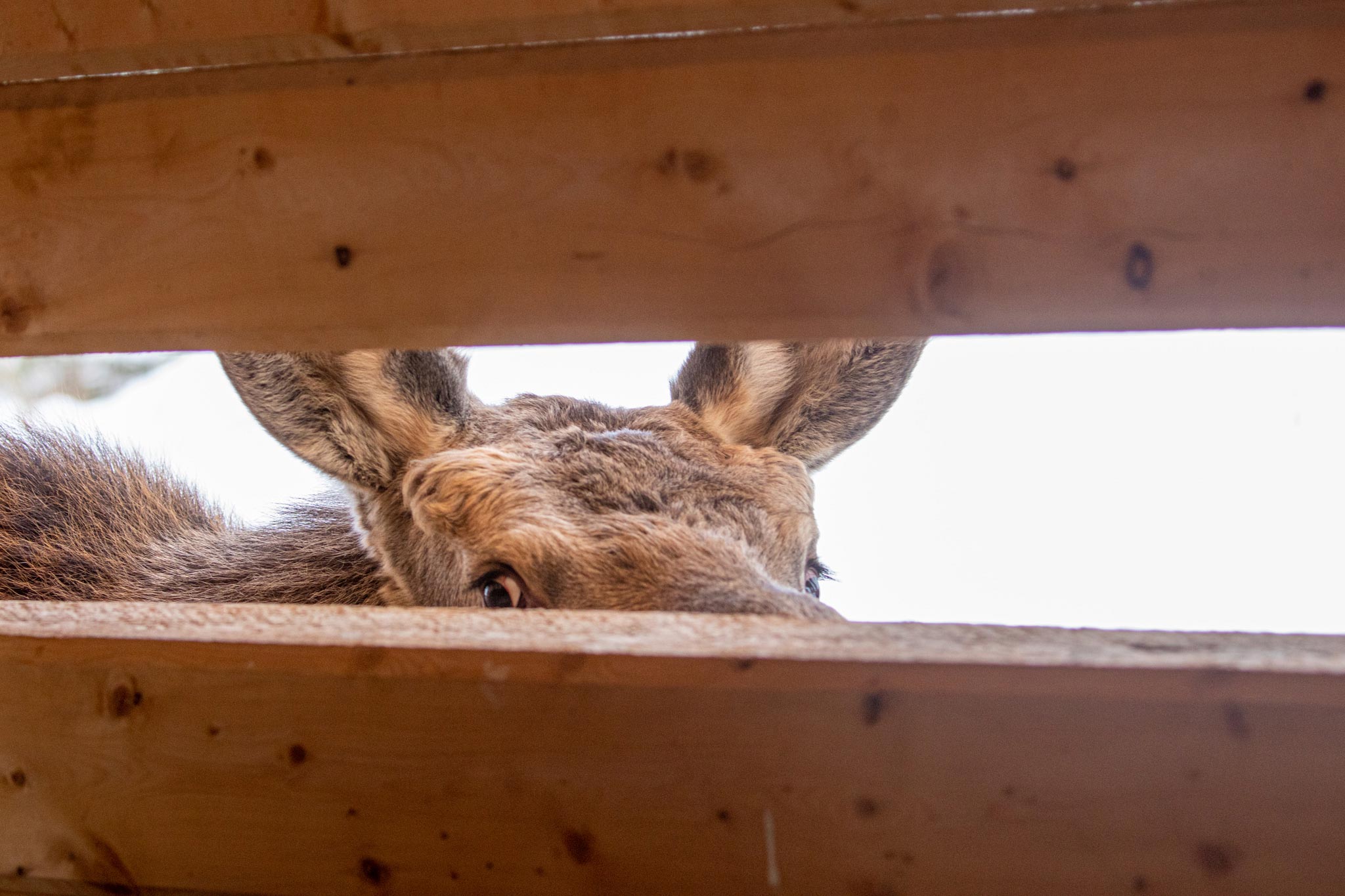
What’s in the Feed Station: Moose?
3:45 min Video –
The moose get 25 lbs of pellets a day as a supplement of vitamins and trace minerals in a form they like. 25 lbs may not sound like a lot for 4 moose, but there are lots of natural foraging opportunities in their habitat. In the wild, moose eat leaves, bark and twigs from trees and shrubs as well as aquatic plants. Our moose also have a bale of hay placed in the trees in the back corner of the 48.5 acre habitat and we give them browse, which are tree branches with lots of leaves. We also get produce from local grocery stores or other community members (things like lettuce and veggies) to feed the moose.
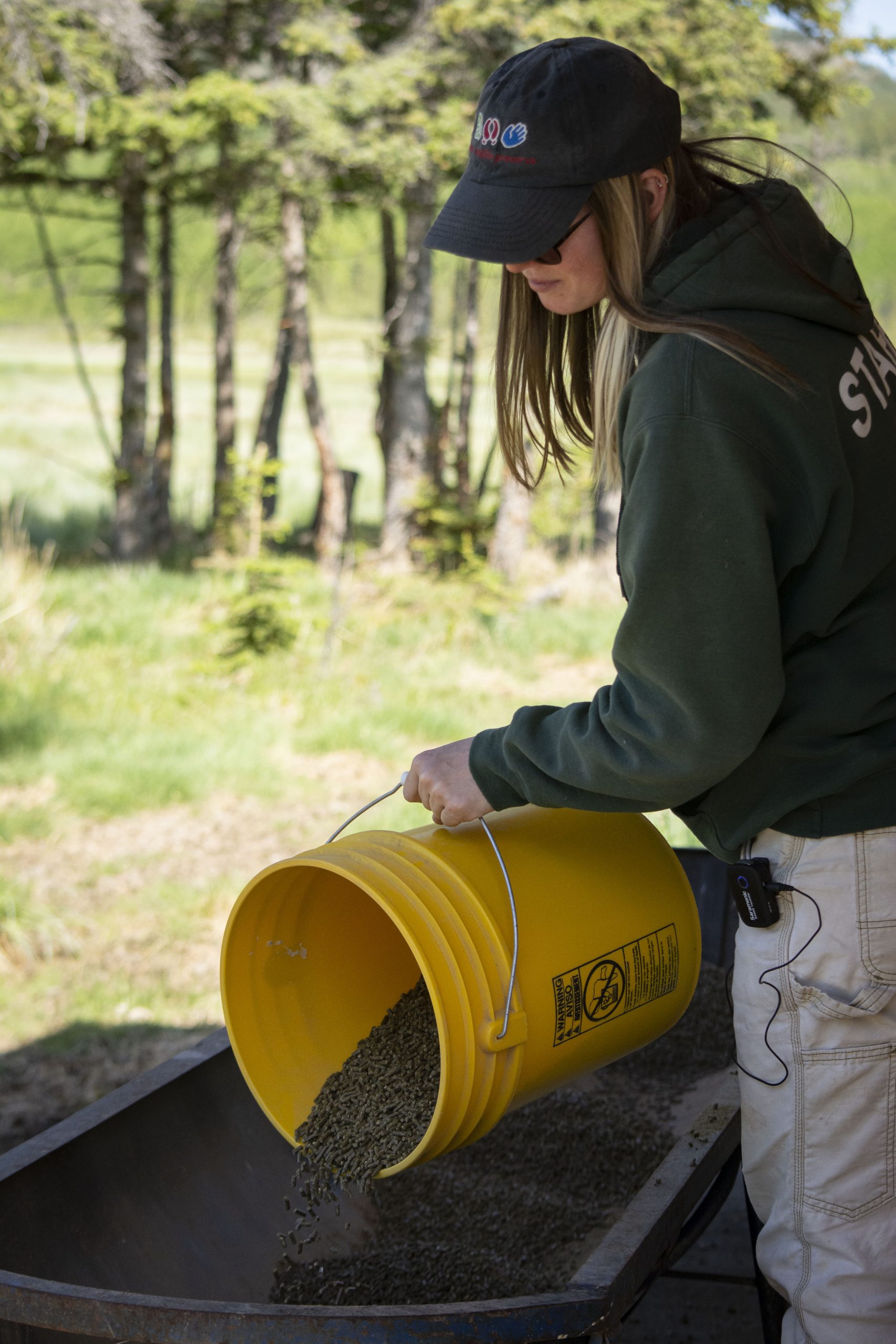
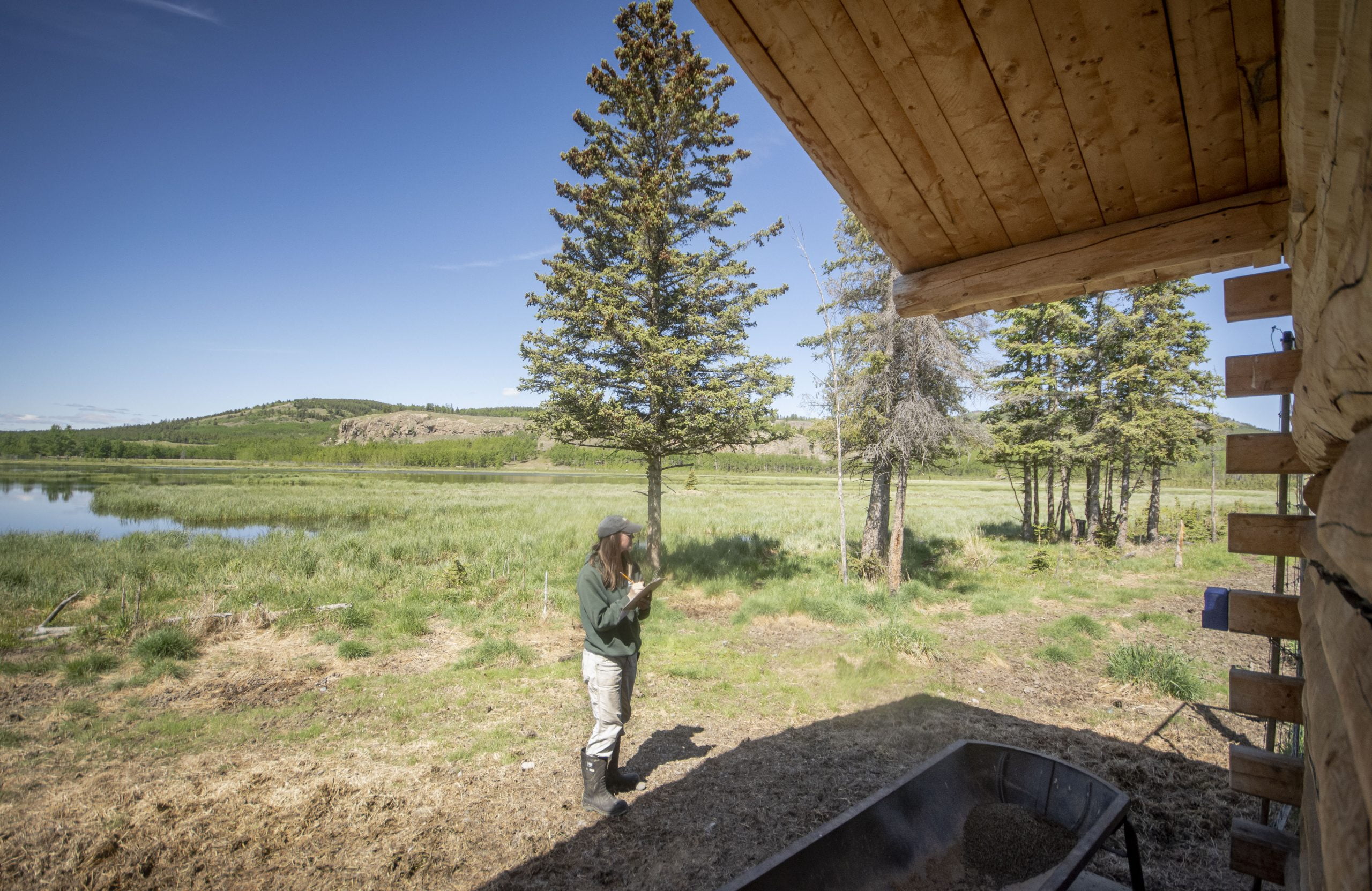
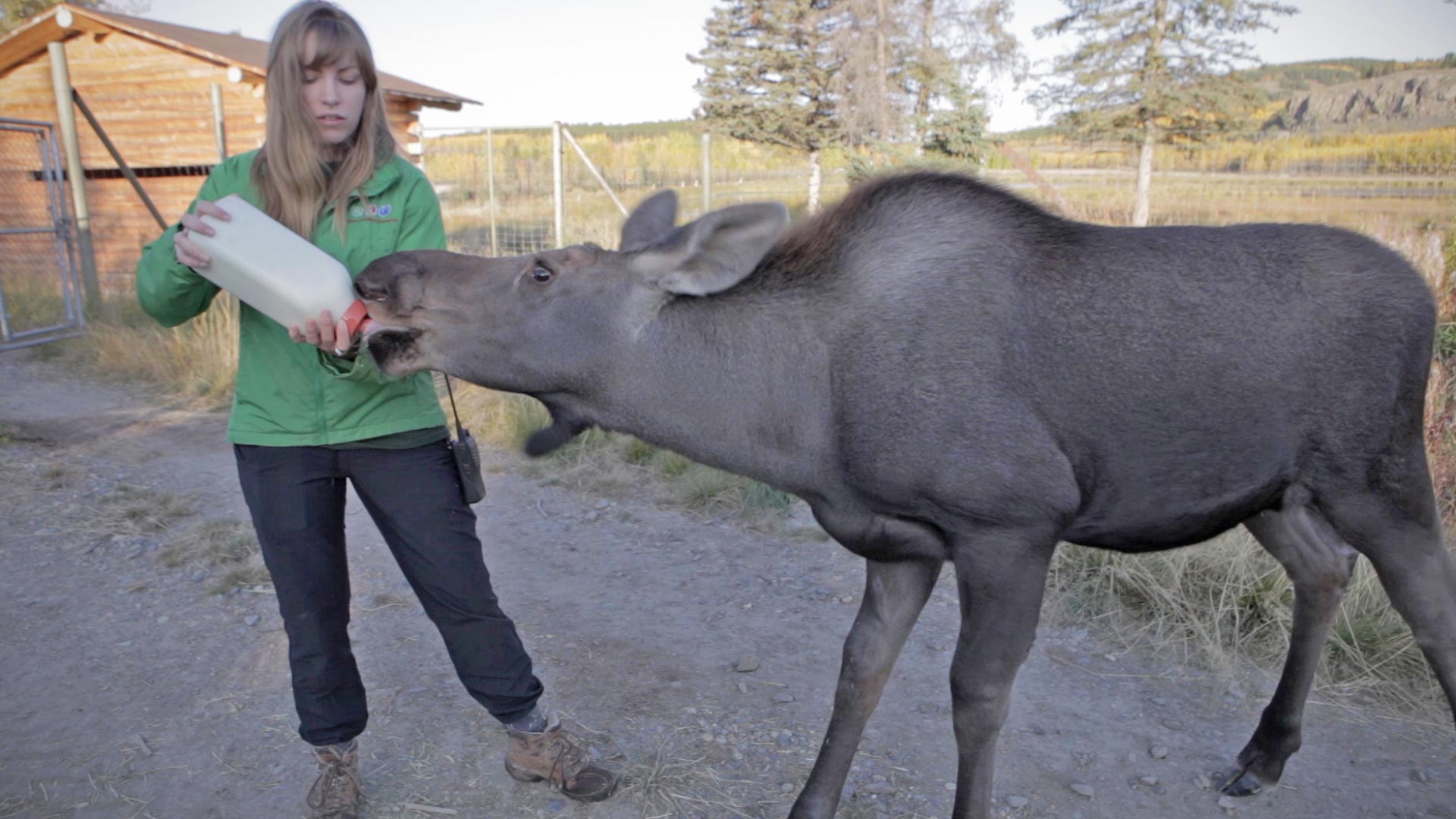
Read Watson’s original story and then watch the video of Watson taking the first steps to his larger habitat, after his initial rehabilitation.
Banner photo credit Neil Zeller: Watson gets curious and says hello through the slats in the Animal Feeding station.
Learn as Dr. Maria Hallock provide hoof trims to Rocky Mountain Goats!
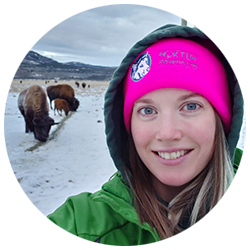
Bree Parker
Animal Care Assistant
All animal lover to her very core! Bree has had a menagerie of pets over the years, including mice, crayfish and a hedgehog. After completing her Environmental Technician diploma at Seneca College, she realized her true calling was with animals, sending her back to Ontario this coming fall for University of Guelph Ridgetown Campus’s Veterinary Technology program. Bree is always eager to learn new facts about the animals at the Preserve that she can share with visitors.

This is great. Nice to watch too. Thanks for your work with helping the animals.
Hi,
Is it wood pellets that you guys feed the moose?
Hi Louise,
Thanks for reading the article and asking this question. The ungulates have a specially formulated food pellet that contains trace minerals, protein content. Many years ago it was formulated by our Veterinarian, Dr. Maria Hallock with mostly our caribou in mind given they are the most picky eaters.
When was this published
Thanks for connecting – This blog was posted Jun 20, 2020. Any of the blogs you can see their posted date at the very top ( between the photo title and the body/text context of the article.